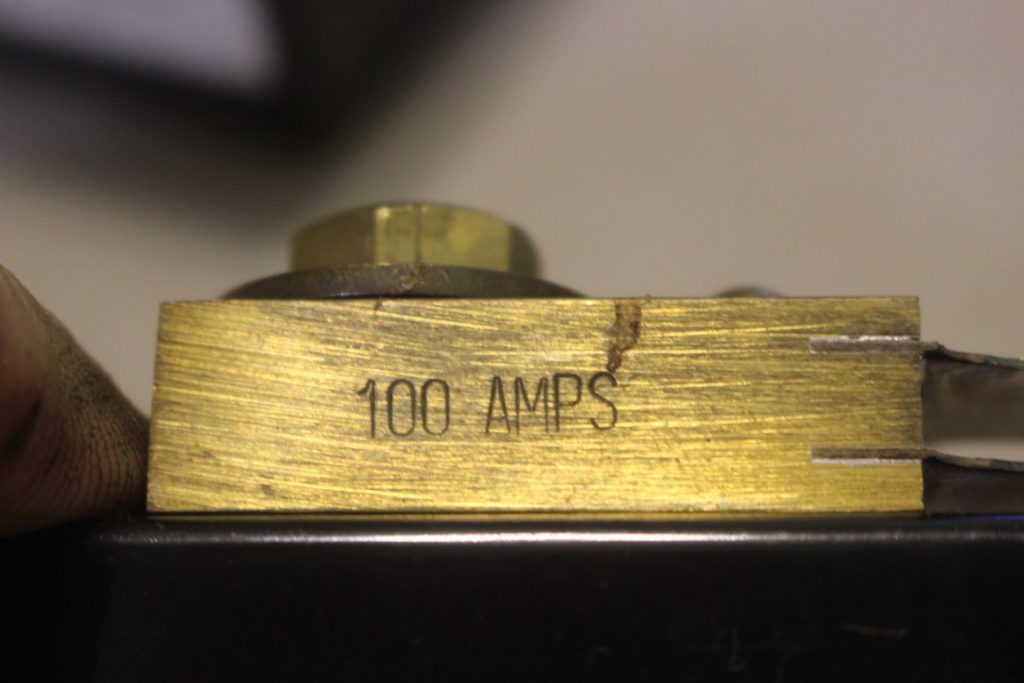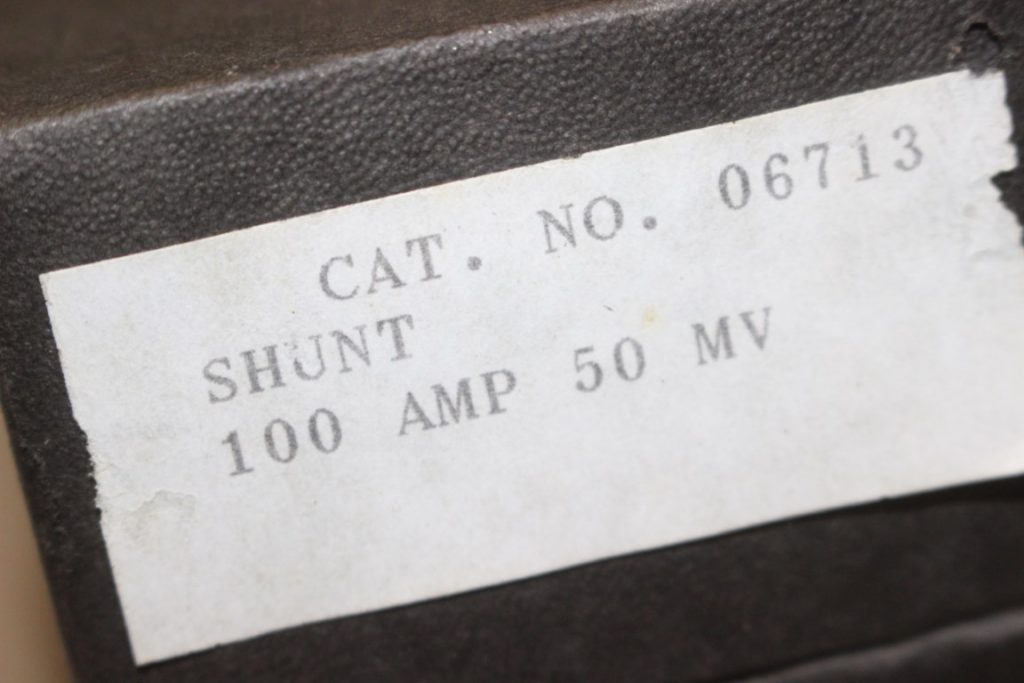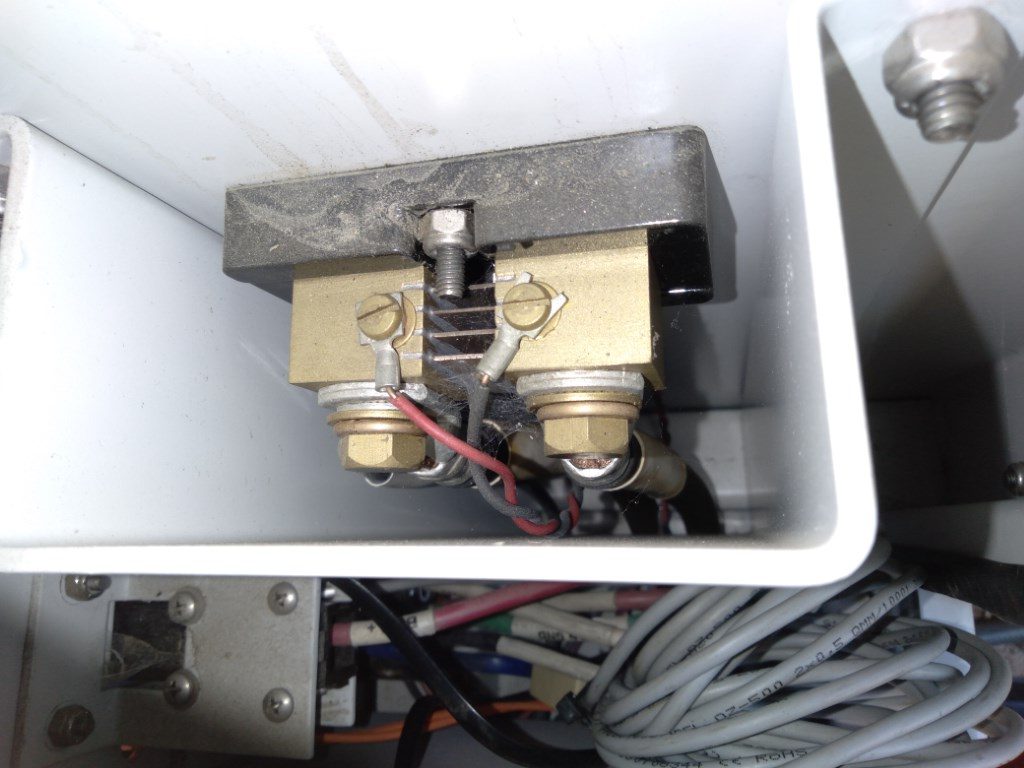Let’s talk about shunts.
That thing in the picture is a shunt. As in when your Momma said, “Y’all shunt be pokin’ that possum ’cause he’ll bite you!”? No, not that kind of shunt. For the record, my Mom was born in Massachusetts and raised in Palm Beach County, Florida, with a Danish father and a Down East mother, so she never did learn to speak proper Southern.
A shunt is actually just a resistor. It’s a very LOW resistance that can handle a relatively large current…some times a sho’nuff large current. (Southern is my native language.) Of particular note, a standalone shunt, like this one, has 4 connections. The two big ones carry the current and the two little ones are for the meter.

So of what use is it? Glad you asked! If you are going to be working with lots of DC (Direct Current) power, it is often a good idea to know how much is flowing and which way. Is it coming or going? Shunt’s work with AC, too, but mostly AC has another neat gadget that is easier to use.
Typical uses in solar would be to see how much current is going into your inverter or how much current is being produced by your solar panels. Let’s say you want to monitor your batteries. The shunt is placed in line with your big battery cable, like a fuse you probably should have. Properly sized, it should just sit there and not bother
anything. Because the resistance is very, very low, there will not be much voltage drop across it, but there will be just a teeny bit. The shunt’s data sheet will tell you just how much voltage drop or sometime the amount will be stamped somewhere near the terminals.

Let’s say you have a shunt that drops 150 millivolts (thousandths of a volt) when passing through 150 amps. When you connect a meter that reads millivolts to the smaller terminals, then the meter will display your current flow in amps. (It is really amperes, but nobody says that.) If you have the old fashion d’Arsonval mechanical meter, the needle will swing to the right or left of center, indicating that the battery bank is being charged or discharged. Your digital meter will add a “-” indicator for discharge.
Sometimes shunts are built into equipment and you won’t see them. In fact, the built in shunts are often just a fat wire jumper on a circuit board, because, remember, a shunt is just a very low resistance. Any charge controller that displays current will have one.
Let’s take a look at Ohm’s Law, for a moment. I know some of you will glaze over at the thought of math, but if I can do it, you can do it. The hard part is the goofy labels. E=I x R. If it helps, make it V=A x R because in this variation of it, we are saying the Voltage = the Amps x Resistance. You can turn it around and say I x R=E. If our shunt has a resistance of .001 Ohms (the electronic symbol for this is a Greek letter that looks a bit like an upside down horseshoe.) and we put 45 amps through it, then 45 x .001=.045 volts or 45 millivolts.
Was that so hard?
Most of the shunts in my system are built into the magic boxes, but the Sunny Island inverters are connected through some external shunts hidden behind a cover plate. (A cover plate is a good idea because you may have noticed that touching active electrical components can be unpleasant or even hazardous to your well being.) I bought the cabinet
pre-wired, but it appears it is using the shunts for battery management. The Sunny Island is a wonderful box, but very complex in its abilities. In my system, it not only monitors current flow when using power from the batteries, but it manages the charging of the batteries from an external source, like the grid or my Diesel generator, which is also controlled by the Sunny Island. Charging and equalizing batteries is a very complex business if you want the batteries to last a long time and the Sunny Island uses the shunts to regulate how much current is flowing based on the size of the battery, temperature and the state of charge.

So you see, monitoring current flow provides useful information and a shunt makes it easy. Even easier, for under $20 you can buy a kit with digital meter and matching shunt on Ebay.–Neal

Pingback: Homepage